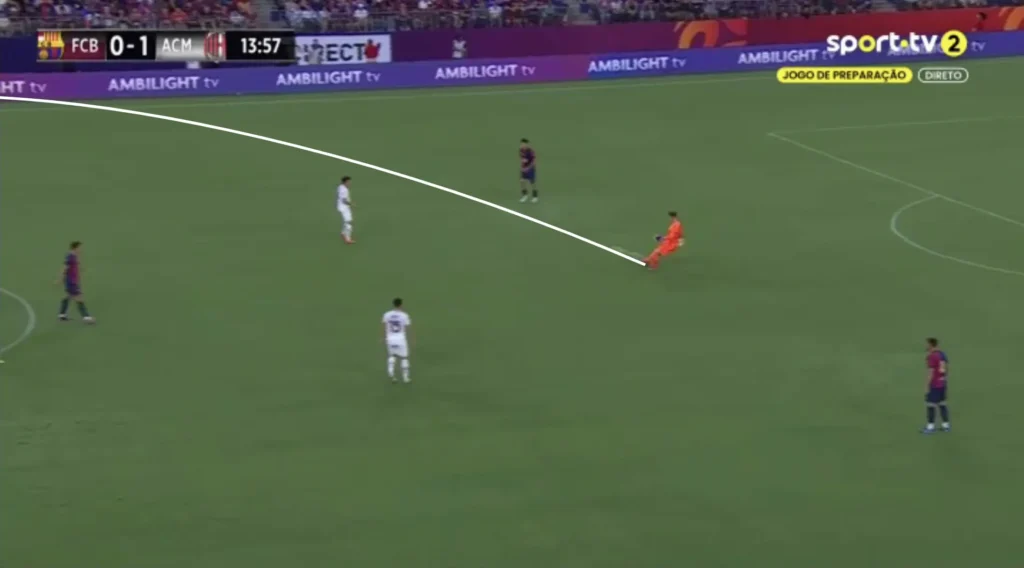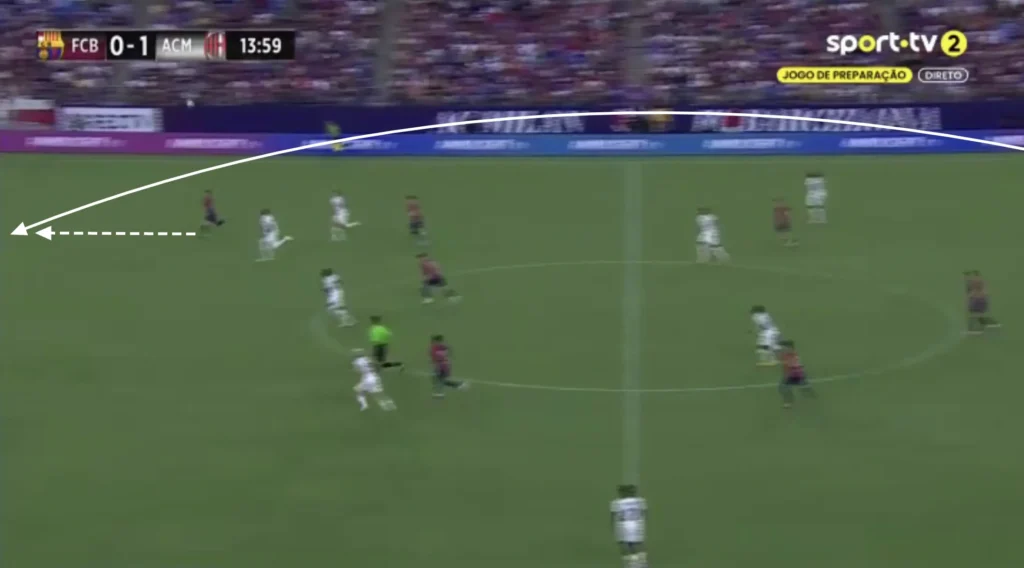In football, tactics shape the way teams play and approach games. One such strategy that has stood the test of time is the use of long balls. Often perceived as a straightforward or rudimentary tactic, these direct passes are far more nuanced and can be a decisive tool in breaking defensive structures and exploiting opposition weaknesses. In this article, we’ll analyze the concept of long balls, their tactical purposes, their variations, and how they are utilized in modern football.
What Are Long Balls?
A long ball is a pass that covers a significant distance on the pitch, typically played in the air, aiming to bypass multiple lines of the opposition. These passes are often directed toward a target player, such as a striker, winger, or even an advanced midfielder. Unlike short or medium-length passes that emphasize intricate build-up play, long balls prioritize directness and efficiency. This tactic requires excellent technical ability and tactical awareness to execute effectively.
Long balls are typically employed by more pragmatic and defensive teams that focus on minimizing risks and maximizing directness. For such teams, the long ball is an effective way to relieve pressure, bypass midfield congestion, and exploit aerial or physical mismatches.
However, possession-based teams can also use long balls as a strategic tool. Roberto De Zerbi, for example, has popularized the principle of “playing where the space is.” This concept emphasizes adapting to the opponent’s positioning. If the opposition pushes up to press high, it creates space behind their defensive line. In such scenarios, a well-timed long ball can exploit this space, turning defensive pressure into attacking opportunity. De Zerbi’s approach demonstrates how long balls can seamlessly fit into a more nuanced, possession-oriented style of play.
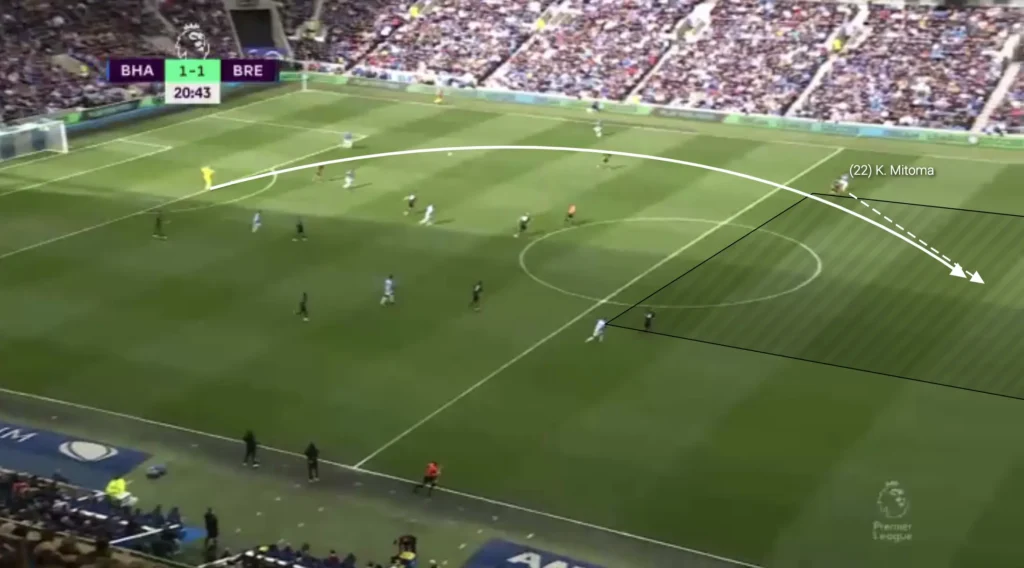
Tactical Purposes of Long Balls
Long balls serve a variety of tactical objectives, depending on the team’s playing style, personnel, and the context of the game. Below are some of the key purposes:
1. Breaking Defensive Lines
Long balls are particularly effective against compact defensive structures, especially when the opposition defends in a mid-block. By playing the ball over the defense, teams can exploit spaces behind the backline for fast attackers to chase. This approach is especially useful when defenders lack pace or positional awareness.
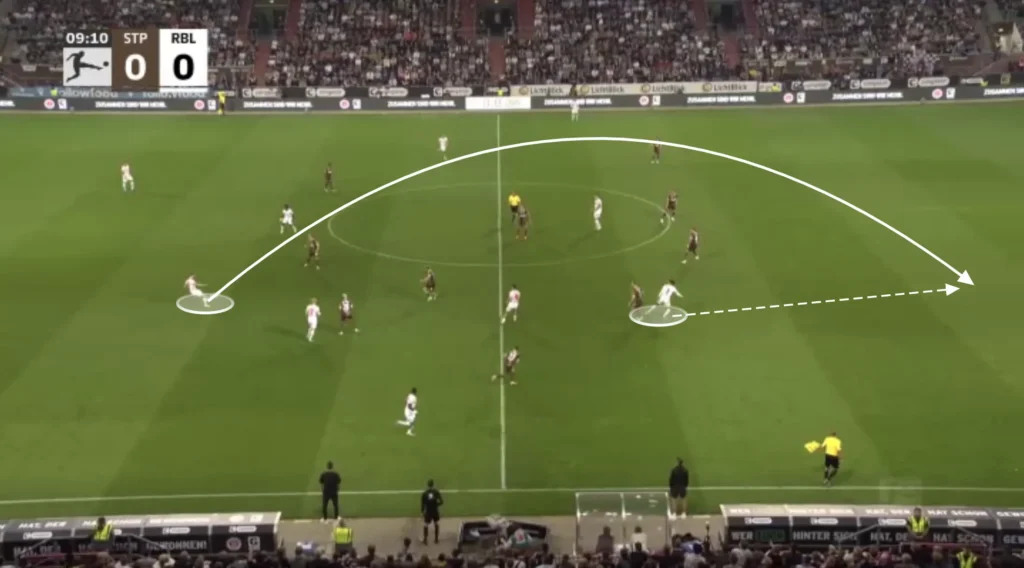
2. Transitioning Quickly
In moments of defensive recovery or counterattacks, long balls provide a rapid way to transition from defense to attack. A well-placed long ball can catch the opposition out of shape, creating immediate goal-scoring opportunities. Teams that rely on quick transitions often build their strategies around this method.
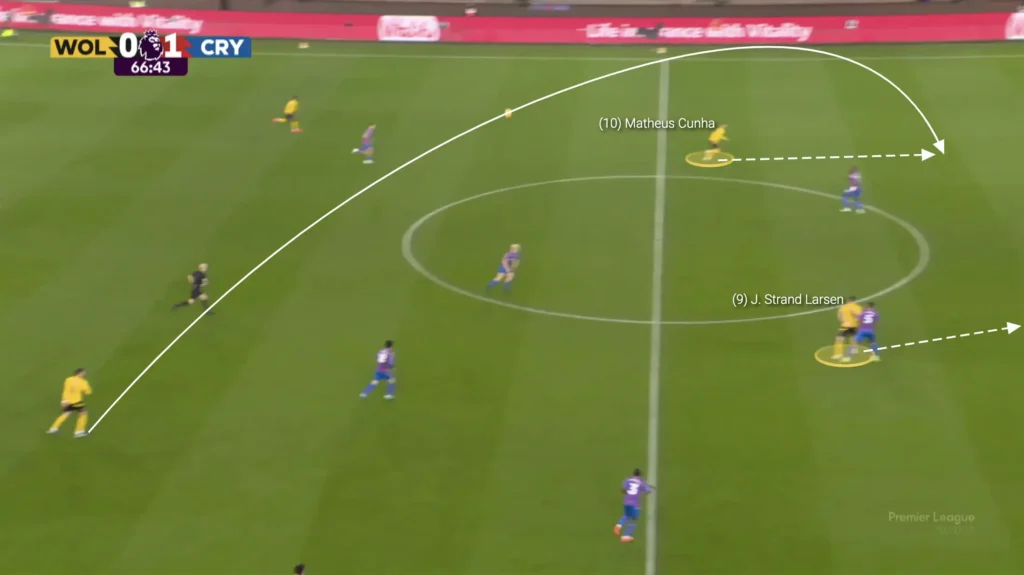
3. Targeting Aerial Dominance
Teams with physically strong and tall players, such as target men, use long balls to capitalize on aerial duels. Winning the first ball can lead to flick-ons, knockdowns, or lay-offs, creating opportunities for advancing midfielders or wide players to join the attack.
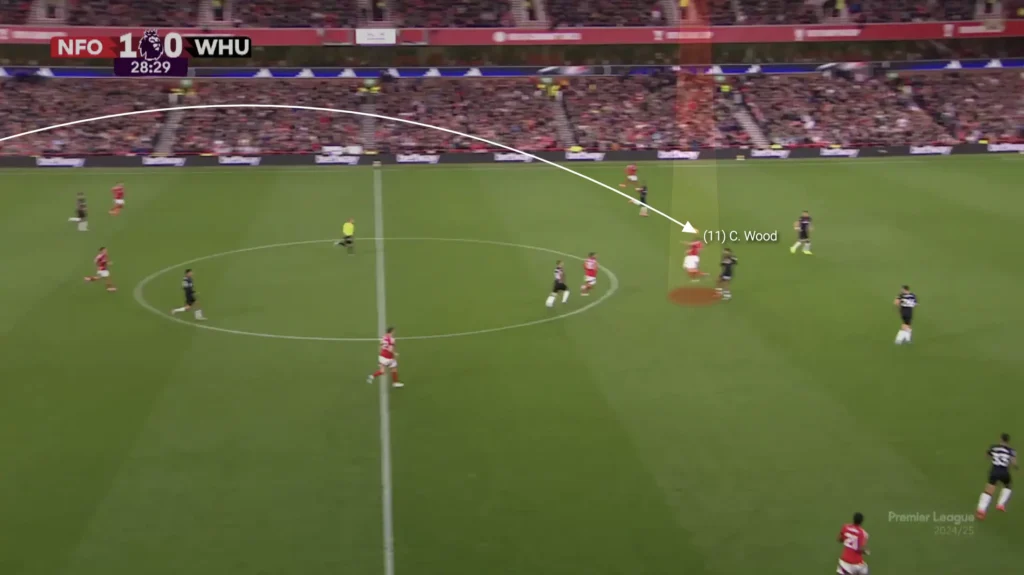
4. Relieving Pressure
When a team is under intense pressure in their defensive third, long balls can be used to clear the danger and push the game into the opponent’s half. This tactic provides the team with an opportunity to reorganize defensively while also keeping the opposition on their toes.
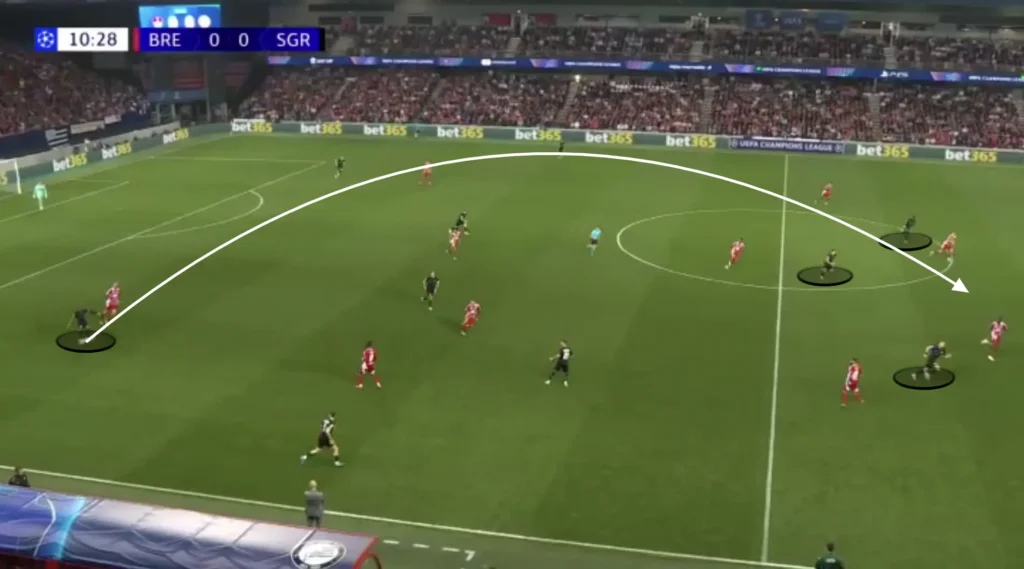
5. Stretching the Opposition
By employing long balls, teams can stretch the opponent’s defensive and midfield lines vertically. This creates gaps between the lines, offering more space for creative players to operate in.
Types of Long Balls
Long balls can be categorized based on their trajectory, target, and purpose. Understanding the variations helps to appreciate their tactical flexibility.
1. Diagonal Long Balls
These are cross-field passes aimed at switching play or targeting wide players. They stretch the opposition’s defensive shape horizontally and often create 1v1 situations for wingers or fullbacks.
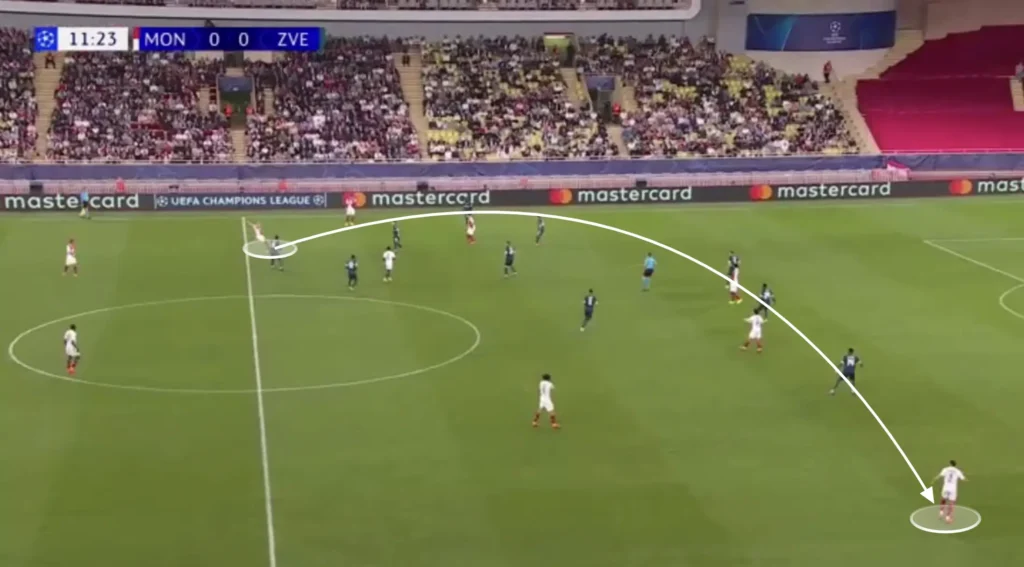
2. Direct Long Balls to a Striker
These passes target a central forward who often acts as a pivot to hold up play or flick the ball on to advancing teammates. This approach is common when the striker excels in aerial duels and physical battles.
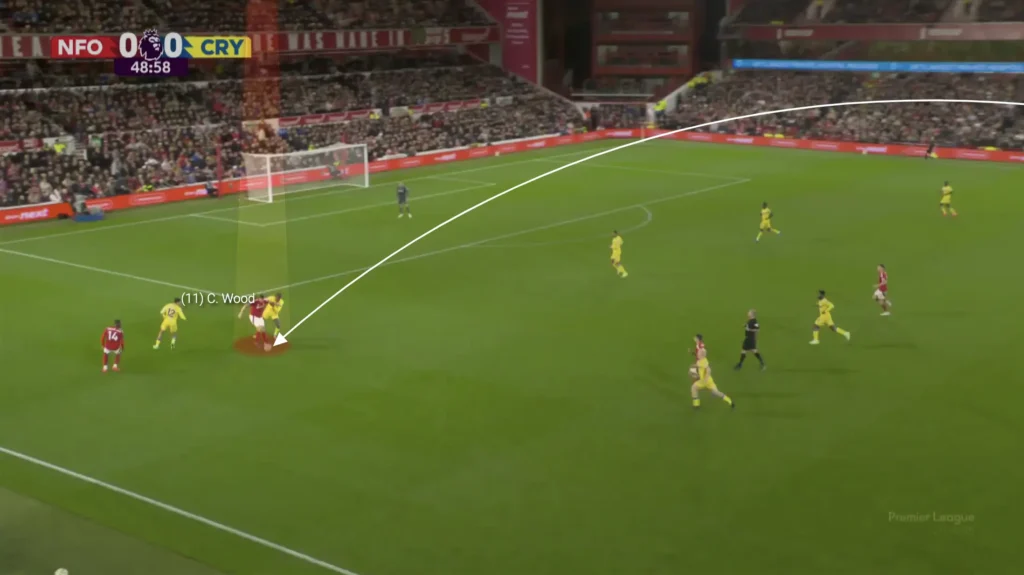
3. Over-the-Top Through Balls
Played behind the defensive line, these passes aim to exploit the pace of attackers running into open spaces. They are particularly effective against high defensive lines that leave space behind.
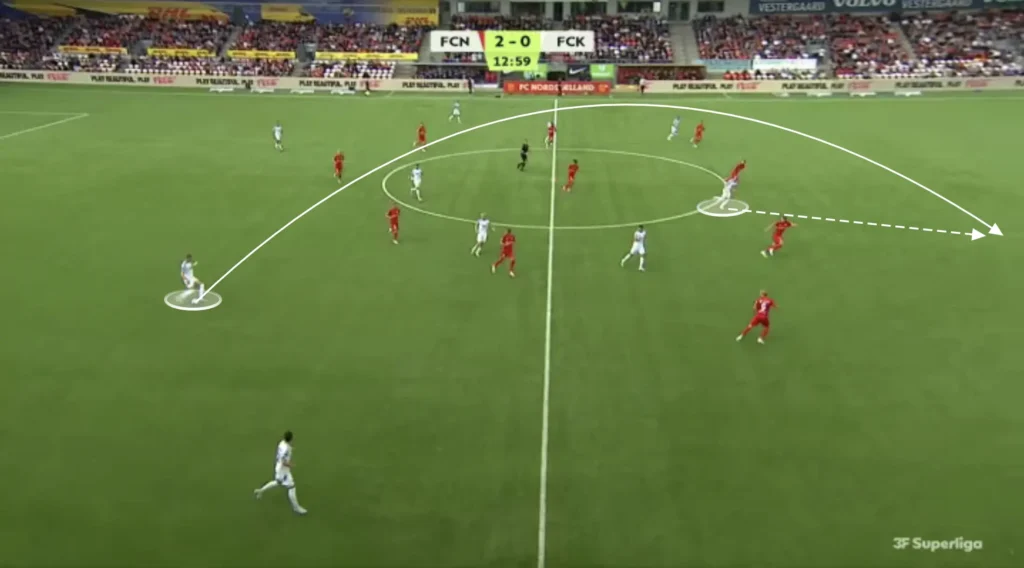
4. Sweeper-Keeper Long Balls
Modern goalkeepers with excellent distribution, such as Ter Stegen, Ederson, and Alisson, often use long balls to bypass pressing traps and directly launch attacks. These passes combine defensive safety with offensive potential.
5. Clearance Long Balls
These are defensive long balls aimed at clearing the ball from danger. While not inherently attacking, they can initiate counterattacks if directed strategically toward an advanced player or space.
Examples in Modern Football
- Liverpool under Jürgen Klopp often utilized long diagonal balls from Trent Alexander-Arnold and Virgil van Dijk to switch play or find Mohamed Salah and Sadio Mané in advanced positions. Alexander-Arnold’s pinpoint accuracy and Van Dijk’s vision allowed Liverpool to bypass midfield pressure, creating opportunities for their pacey forwards to exploit. This approach was particularly effective against teams that pressed high or left space in wide areas.
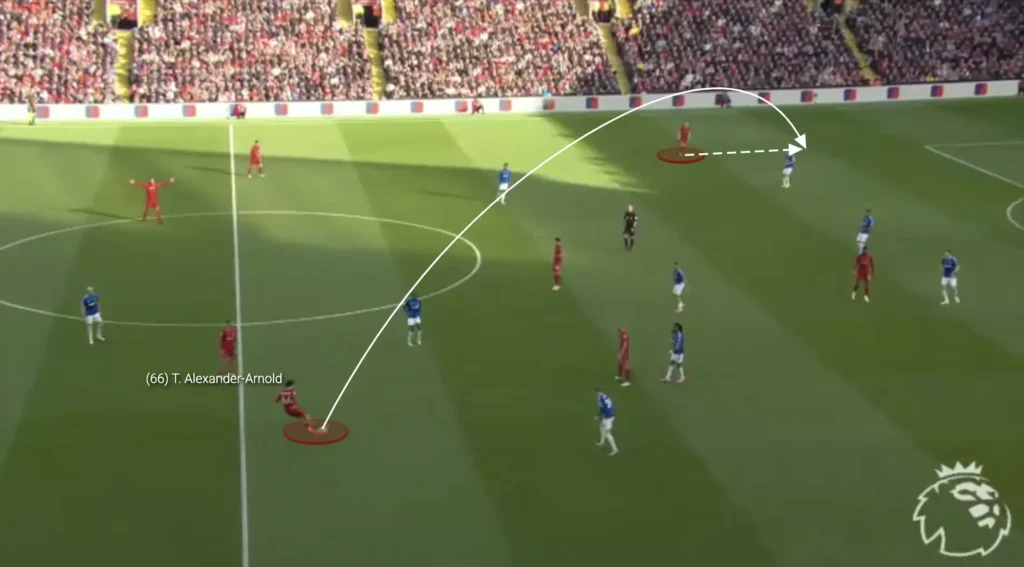
- Burnley under Sean Dyche relied heavily on direct long balls to capitalize on aerial duels, using target men like Chris Wood, Ashley Barnes, and Matej Vydra to hold up play and bring others into the attack. Dyche’s Burnley often focused on winning second balls, with midfielders positioned strategically to collect knockdowns and drive the team forward. This pragmatic approach allowed Burnley to punch above their weight and frustrate technically superior opponents.
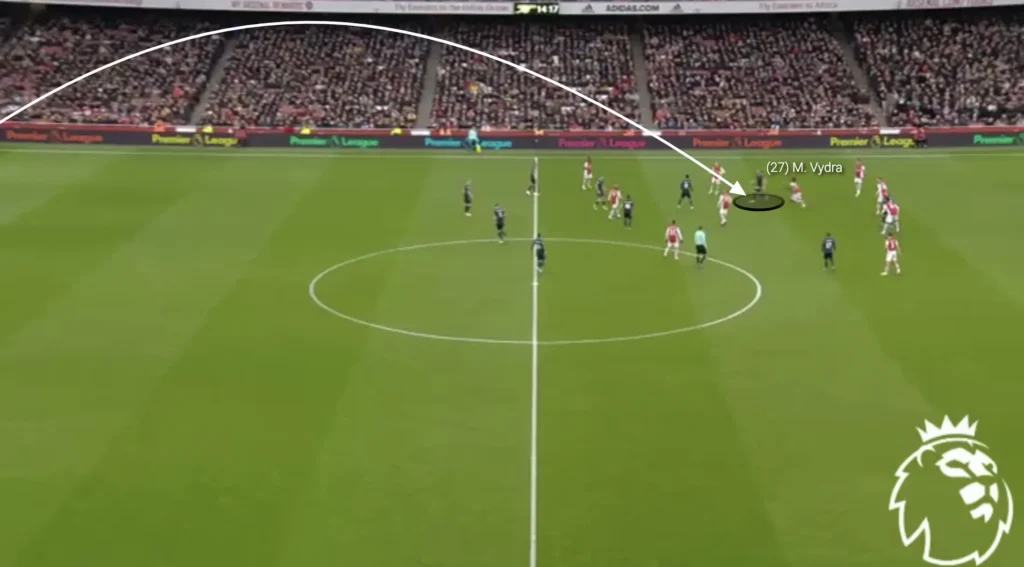
Advantages of Long Balls
The long ball tactic offers several advantages that make it an essential tool in a team’s arsenal:
- Directness: Long balls cut through defensive structures quickly, creating immediate goal-scoring opportunities.
- Flexibility: They can be used in various scenarios, from attacking transitions to defensive clearances.
- Exploitation of Space: Long balls are ideal for exploiting spaces behind high defensive lines or in wide areas.
- Physical Presence: Teams with tall or physically strong players can dominate aerial duels.
- Unpredictability: A well-timed long ball can surprise the opposition, disrupting their defensive organization.
Limitations of Long Balls
Despite their advantages, long balls come with certain limitations:
- Low Success Rate: Aerial passes are inherently harder to control and often lead to turnovers, especially if not executed precisely.
- Predictability: Over-reliance on long balls can make a team’s attack one-dimensional and easier to defend against.
- Technical Demand: Accurate execution of long balls requires players with good vision, passing technique, and composure.
- Risk of Counterattacks: If possession is lost, a poorly executed long ball can leave a team vulnerable to quick counterattacks.
Training and Execution
To execute long balls effectively, teams must focus on several key areas during training:
- Technical Skills: Players must possess the ability to execute precise long passes under pressure. This includes mastering the weight, trajectory, and accuracy of the pass.
- Movement Off the Ball: Teammates need to anticipate the pass and position themselves to receive it, win second balls, or exploit the spaces created.
- Aerial Ability: Target players must excel in aerial duels and have the ability to control or direct the ball effectively.
- Tactical Awareness: Players should understand the game situation and recognize when and where to deploy long balls effectively.
- Coordination Between Lines: Defenders, midfielders, and attackers must work in unison to ensure the team maintains balance and is prepared for any potential turnovers.
Conclusion
Long balls are a versatile and impactful tactic in football. While often associated with traditional or defensive styles, they are far more nuanced and can complement modern tactical systems. Whether it’s breaking defensive lines, transitioning quickly, or exploiting aerial dominance, these direct passes remain a vital aspect of the game. Mastering their use can provide teams with an edge in various situations, proving that direct football, when executed with precision and intelligence, is far from outdated. By understanding the intricacies of long balls and integrating them into a broader tactical framework, teams can unlock new dimensions in their play and adapt to different challenges on the pitch.

